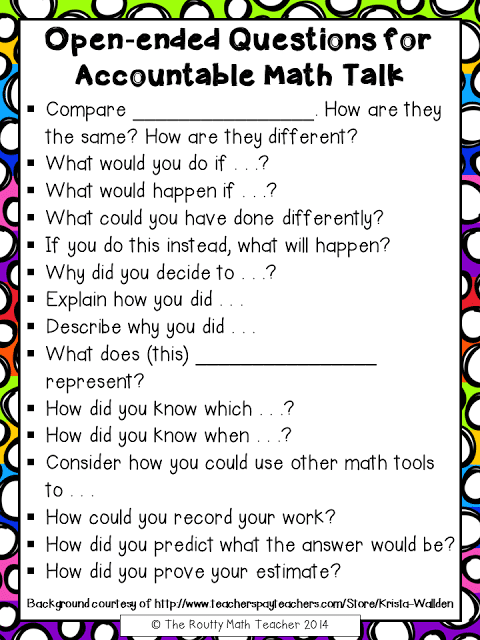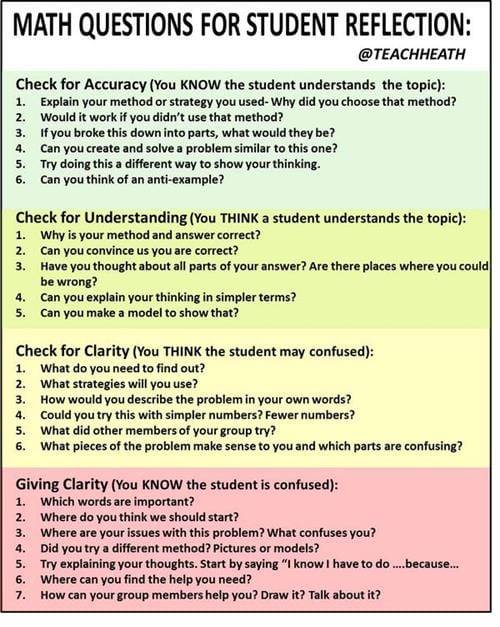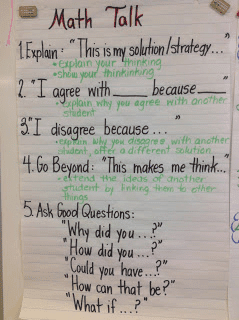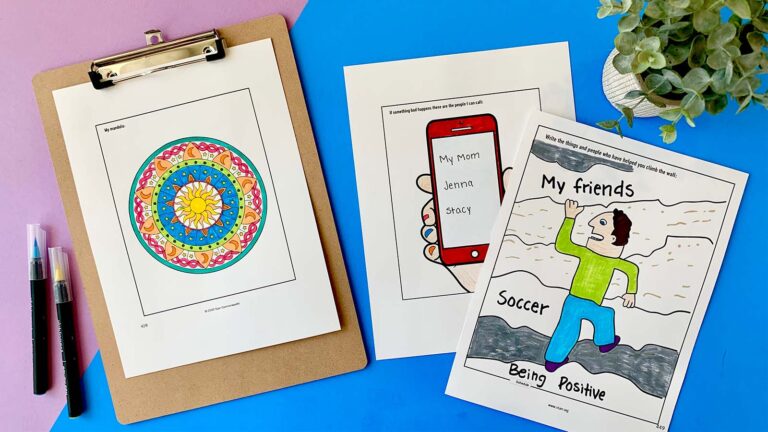Below we’ve rounded up eight tips to help you focus your questioning and, by doing so, deepen students’ mathematical reasoning.
Don’t let “information gathering” questions dominate your lesson.
These are answer-seeking questions such as “What is the formula for finding the area of a rectangle?” “When you write an equation, what does the equal sign tell you?” While these questions have their time and place (they help to establish what students know), they don’t reveal higher-order thinking or reasoning.
Ask probing questions that require students to explain, elaborate or clarify their thinking.
This includes articulating the steps they took to solve a problem or complete a task. For example, “As you drew the number line, what decisions did you make so that you could represent seven-fourths on it?” “Can you show and explain more about how you used a table to find the answer?”

(Source:Minds in Bloom)
Give students adequate time to respond.
Research has shown that we often give students less than five seconds to answer a question in math class! When we move so quickly, we lose the chance to see how students are making sense of mathematics.
Ask students to make the mathematics visible.
By this we mean discussing the connections between mathematical ideas and relationships. For example, “How does that array relate to multiplication and division?” “In what ways might the normal distribution apply to this situation?”
Encourage reflection and justification.
These questions reveal deeper understanding of students’ reasoning and actions, including making an argument for the validity of their work. For example, “How might you prove that 51 is the solution?” “How do you know that the sum of two odd numbers will always be even?”

(Source:@TEACHHEATH)
Avoid “funneling” the conversation.
This means landing on a desired conclusion in advance and giving little attention to student responses that veer from the desired path. You may be focused on students arriving at a particular answer, for example, or using a certain strategy to the exclusion of others. In a funneling question pattern, the focus is often on information gathering with one or two higher-order questions at the end.
Try “focusing” your questions instead.
While funneling question patterns are rigid and preset, focusing questions attend to students’ needs and are open to being investigated in multiple ways. A focusing question pattern blends information gathering, probing, reflection and justification. It involves asking students what they notice and encouraging them to communicate their thoughts clearly.
This video case study shows the difference between funneling and focusing questions in action.
Encourage students to ask questions of one another.
It is much easier to facilitate a focusing question pattern when you are not the only one in the room directing conversation. Encourage students to support, challenge and question one another. For example, “Why do you think that?” “Could you have solved the problem in a different way?”
You may find that students’ own questions take the conversation to a level you never imagined reaching!

(Source: Making Shift Happen)
This article is adapted from the NCTM publication Principles to Actions: Ensuring Mathematical Success for All.

